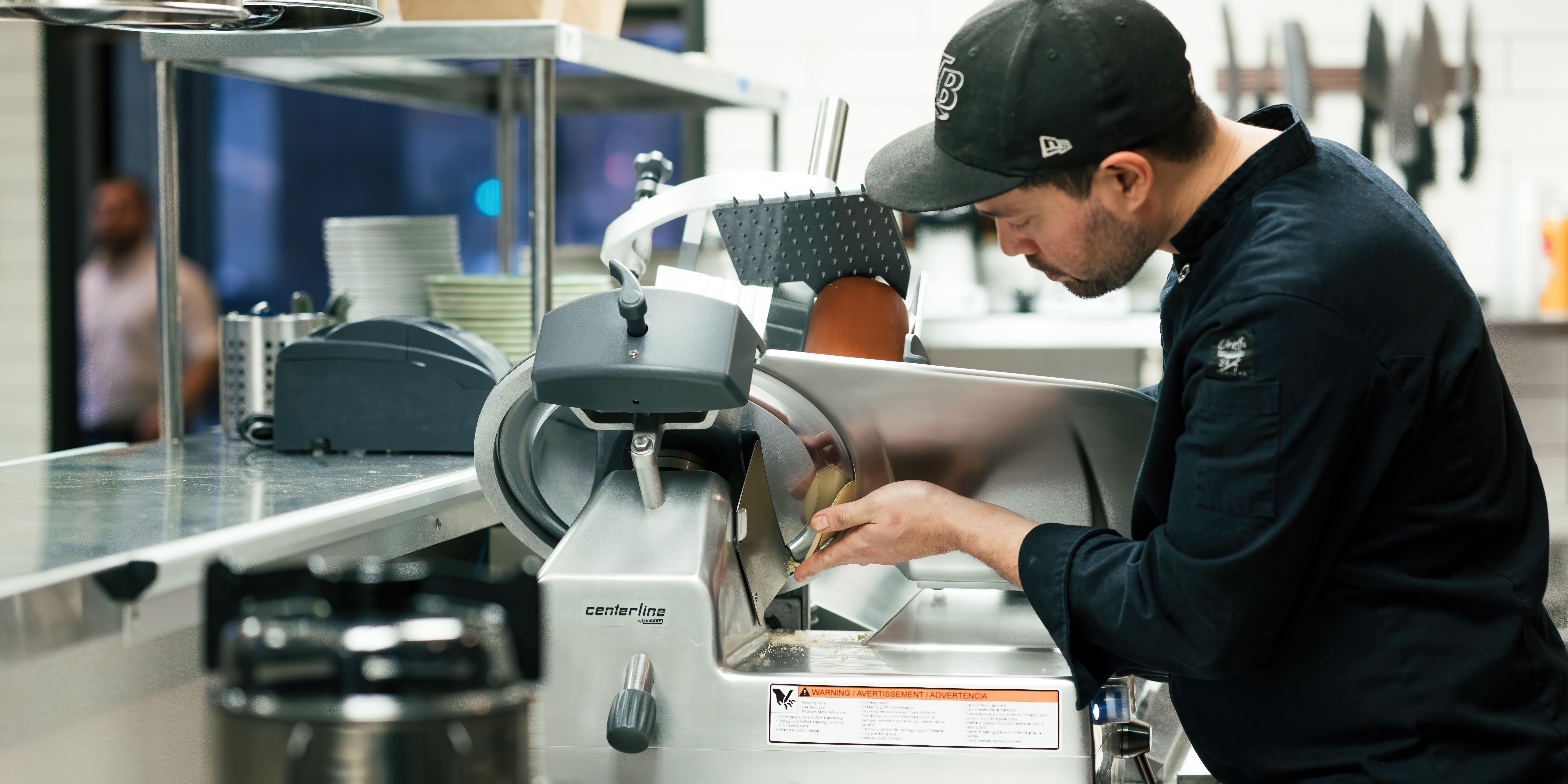Food slicers are frequently used pieces of kitchen equipment that require close attention to proper use and cleanliness, and there are technologies available that make them easier to operate, clean and maintain.
When choosing a slicer for a commercial kitchen, consider these key technologies to help maximize operation and cleanliness — while also improving productivity and efficiency.
Removable Blades and Components
The idea behind removable components is to disengage as many parts as possible from the slicer to reduce the risk of bacteria settling into grooves, nooks and crannies in the machine. The easier it is to remove parts for cleaning, the more likely it is that kitchen employees will do it frequently and thoroughly.
Slicers with removable blades allow operators to easily remove the knives for enhanced cleaning and sanitation. Removable blades — compared to models that do not remove — allow much better access to all areas of the slicer for more thorough cleaning. This contributes to enhanced food safety in a commercial kitchen.
A slicer with removable blade technology featuring a tool that completely encases the knife during removal can be especially beneficial, since this allows the blade to be easily cleaned with minimal operator interaction with the blade. Consider a slicer that offers zero knife exposure at all times. In addition, some removable blade technology available on the market is designed for removal using one hand, for greater efficiency and ease of use.
For even more efficiency, consider a slicer that uses cobalt-edged knives. This helps the knife stay sharper and provides longer life than knives made from other materials. It also reduces the time spent sharpening and changing blades — for improved productivity for the user and cost savings that result from reduced downtime spent on changeover and maintenance.
In addition to removable blades, look for a slicer that has other removable components. The more removable components, the easier access is for cleaning. Removable components also allow employees to put some parts into the dishwasher for greater sanitation.
A removable top cover can be taken off the slicer and brought to the dishwasher or sink for thorough cleaning. Some slicers have a top cover that can be removed much easier with a one-hand mount and magnet pull design. Other options for removable slicer components include removable ring guard covers, a removable feed grip arm, and a product tray that can be tilted or removed.
Additional Options that Contribute to Operator Assurance
- No Volt Release: The no volt release function is basically a “reset” of the machine in the event of a power loss, helping reduce the risk of injury when power is restored. If power is lost while a slicer is being operated, no volt release technology requires that the unit be restarted before operation can continue.
- Home to Start: This function prevents the operator from starting in the middle of a stroke. The slicer must be brought all the way to the home position in order for the operator to begin. Some units also have an automatic shut-off function after 30 seconds of inactivity.
- Gas Assist Lift: A slicer with this feature allows operators to easily raise and lower the unit to clean underneath it — like the spring that helps raise the hatchback of a car, for example.
Proper Training is Key
Proper training is key to enhancing cleanliness and equipment operation in any commercial kitchen. Many slicer manufacturers offer training and educational materials such as posters and wall charts that provide instructions on component removal and reassembly. This helps operators get familiar with the right steps for proper cleaning and food safety.
Ensuring that operators are comfortable with slicers and how to use and clean them are key factors in maintaining safe kitchen practices. There are technologies available that make it easier for operators to use slicers and keep them properly cleaned and sanitized. Many of these options also help save time and improve productivity in the kitchen.











